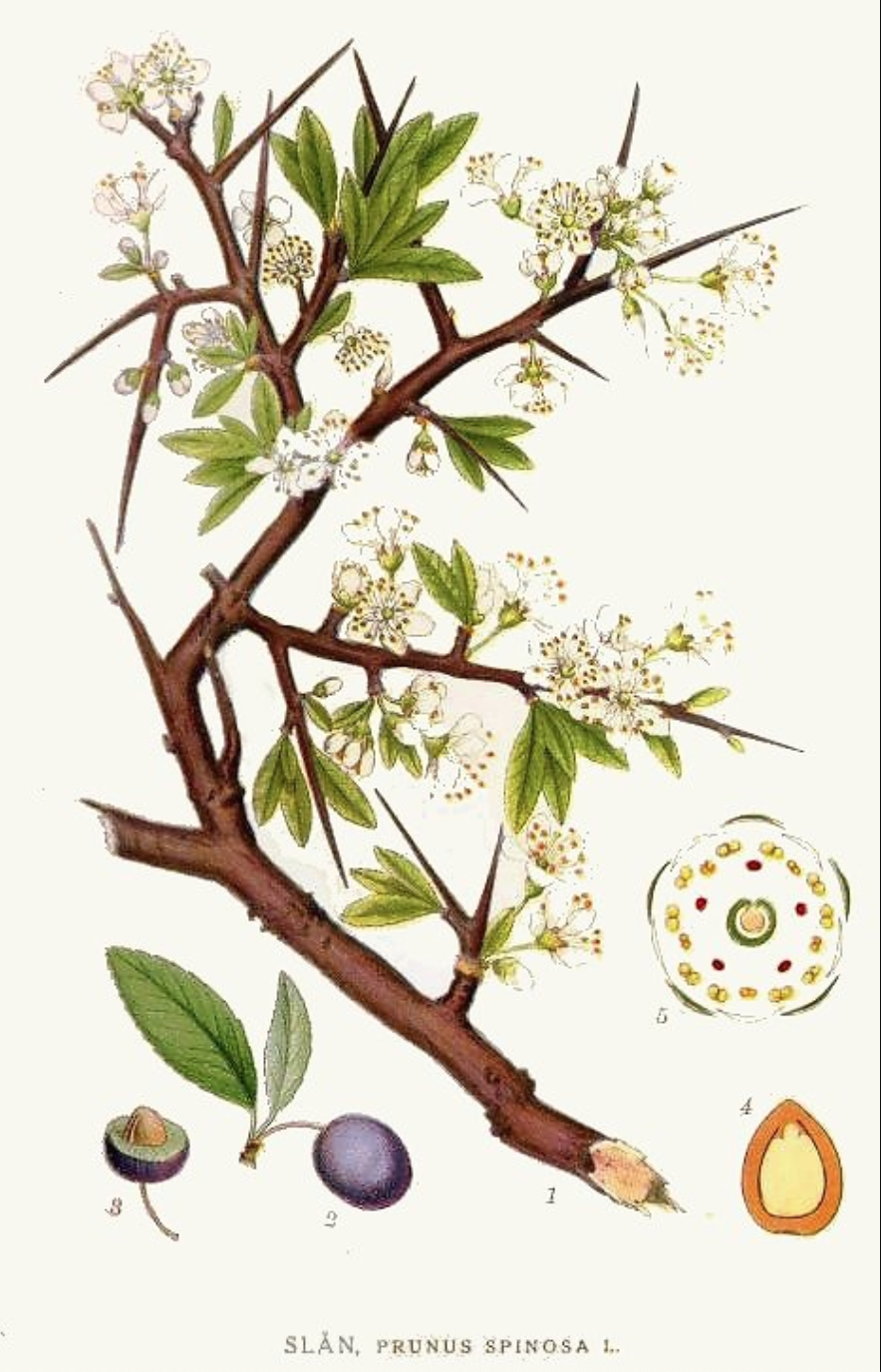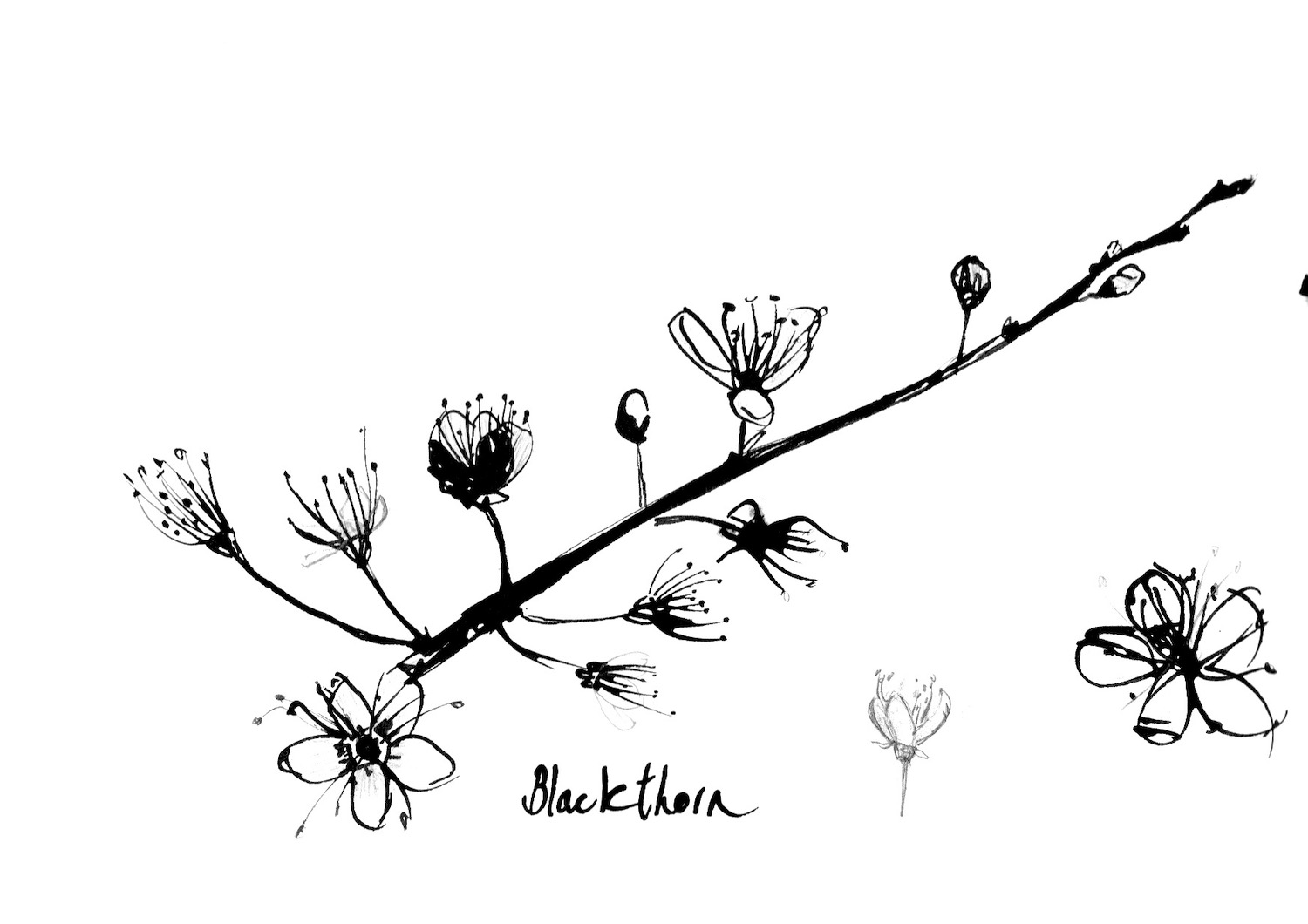Blackthorn
Blackthorn in Blossom
Bedraggled Blackthorn. Pen and ink sketch. Fiona Gall 2024
A few weeks ago, it quite literally popped out of the hedgerow on my afternoon walk by the workshop.
First, I thought it was Hawthorn but I have now discovered that that comes out a little later. Blackthorn is the FIRST wild tree in the UK to blossom, signalling the coming of spring. You know, the weird in-between time. The signs are there, you wish it was but it is still disappointingly way too cold.
Blackthorn is a surprisingly interesting tree.
Did you know?
-
The blackthorn tree is wild and native to the UK
-
It is the first tree to blossom, before there is even a hint of spring
-
It flowers before its leaves appear
-
It often flowers when we get spells of wintry, cold weather and has given rise to the phrase ‘Blackthorn winter’
-
It is the tree of the infamous sloe berries. (remember where you spot them because in autumn after the first frost you can return and pick them)
-
Blackthorn is associated with witchcraft and it is said that witches’ wands and staffs were made using blackthorn wood.
Photo of Blackthorn blossom.
In matter of fact and practical terms:
Blackthorn is a member of the Rose family: Rosaceae and its berries are an ancestor of our cultivated plums. Its early flowering provides a valuable source of nectar and pollen for bees in spring and many birds will nest in its dense protective thorny thickets and feast on the sloes in autumn.
It is thickly invested with strong thorns, which are long sharp spines. These form in place of twigs and can give painful stabs and scratches which usually turn septic. Because of this It was used by farmers to make a thick hedge that held in the cattle, the original barbed wire if you will, hence why you see so much of it growing in the countryside.
The dark branches provide a stark contrast to its bright white star like unruly blossom, that burst open in early spring before its leaves unfurl. Blackthorn is linked to both healing and death. Parts of the tree were used to make a healing tea to treat fevers and flavour gin. Its thorns were used to make weapons such as the Irish shillelagh; cudgel/ walking stick and ‘pins of slumber’ were thorns coated in poison. Interestingly it is a hermaphrodite, meaning both male and female reproductive parts are found in one flower which only adds to its dualistic nature.
 Sloe or blackthorn (Prunus spinosa L.): flowering stem with separate fruit and segments of flower and fruit, also a description of the plant and its uses. Coloured line engraving by C.H.Hemerich, c.1759, after T.Sheldrake. Wellcome Collection.
Sloe or blackthorn (Prunus spinosa L.): flowering stem with separate fruit and segments of flower and fruit, also a description of the plant and its uses. Coloured line engraving by C.H.Hemerich, c.1759, after T.Sheldrake. Wellcome Collection.
Folklore, Mythology and symbolism



